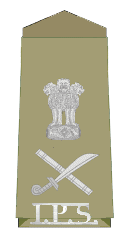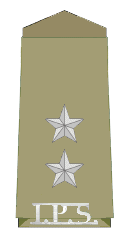List of police ranks in India
Gazetted officers include all the Indian Police Service officers which are Class I officers of the cadre and all State Police Services officers of and above the rank of Inspector of Police (PI) which are Class II Gazetted or Sr PI (Senior Inspector Of Police) who controls a police station in Metropolitan/ Commissionairate Metropolitan Police and State Police forces respectively .
Ranks in law enforcement in India
The following are ranks in the Law enforcement in India.
Permanent Level
- Commissioner of Police (CP) or Director General of Police (DGP)
- Special Commissioner of Police (Spl CP) or Additional Director General of Police (ADGP)
- Additional Commissioner of Police (Addl CP) or Inspector General of Police (IGP)
- Joint Commissioner of Police (Addl CP) or Deputy Inspector General of Police (DIGP)
- Deputy Commissioner of Police (Selection Grade) (DCP) or Senior Superintendent of Police (SSP)
- Deputy Commissioner of Police (DCP) or Superintendent of Police (SP)
- Additional Deputy Commissioner of Police (Addl DCP) or Additional Superintendent of Police (Addl SP)
- Assistant Commissioner of Police (ACP) or Deputy Superintendent of Police (DSP)
Trainee Level
- Assistant Superintendent of Police-2 (ASP-2) (IPS Probationary Rank: 2nd year of service)
- Assistant Superintendent of Police-1 (ASP-1) (IPS Probationary Rank: 1st year of service)
Insign of Gazetted & IPS Officers
The Indian Police Service (IPS) uses insignia on its shoulder flashes which are similar to those used by the Indian Army. Since Police Inspectors and officers below this rank are recruited by states individually, the insignias vary slightly though the rank structure is the same. For example, Maharashtra Police constables use Yellow Epaulet on blue background for Constable ranks while Tamil Nadu Police use Black Chevrons on red background on right sleeve.[1]
| Insignia |  |
 |
 |
 | |||||
| Rank | Deputy Commissioner of Police or Senior Superintendent of Police | Deputy Commissioner of Police or Superintendent of Police | Additional Deputy Commissioner of Police or Additional Superintendent of Police | Assistant Commissioner of Police or Deputy Superintendent of Police | |||||
| Abbreviation | DCP or SSP | DCP or SP | ADL.DCP or ASP | ACP or DSP | |||||
| |||||||||
| Insignia |  |
 |
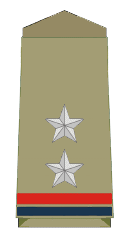 |
 |
  |
  |
No Insignia¹ | ||
| Rank | Inspector of Police | Assistant Inspector of Police2 | Sub-Inspector of Police | Assistant Sub-Inspector of Police | Police Head Constable3 | Senior Police Constable3 | Police Constable | ||
| Abbreviation | INS | API | SI | ASI | HPC | SPC | PC | ||
| |||||||||
- NOTE: The Rank of Police Inspector in the state of Rajasthan, Tripura, West Bengal, Assam and Bihar are divided into two categories, one for gazetted and another for non-gazetted.
Organisational structure and roles
Overview
Law enforcement in India is broadly based on the British model of policing, but has a far more complex structure. Unlike in the United Kingdom, senior and chief police officers are not promoted from the ranks, but are appointed after meeting certain educational requirements and undergoing a competitive examination.
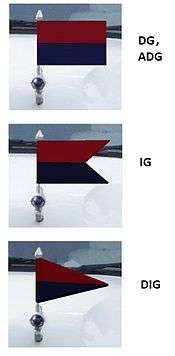
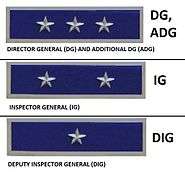
Ministry of Home Affairs and IPS
The Ministry of Home Affairs is in overall charge of internal security and policing and is the controlling authority for the Indian Police Service (IPS). The ministry has jurisdiction over the eight Central Armed Police Forces, each comparable to a British special police force. It also oversees the 34 state police forces, which are comparable to British territorial police forces.
The Indian Police Service is not a law enforcement organization, but a professional body of police officers. Police officers may enter the IPS by two different routes:
- Direct entry: IPS candidates may apply at the federal level by taking the national exam administered by the Union Public Service Commission; if successful, they are given the probationary rank of assistant superintendent and receive further training at the Sardar Vallabhbhai Patel National Police Academy. After passing out, officers are promoted to deputy superintendent and assigned to one of the state police forces.
- State-level selection: Candidates may take a state-level examination for State Police Service (SPS) gazetted officers; examinations are administered by the individual State Public Service Commissions. Successful candidates are gazetted with the rank of assistant commissioner and become members of their state police cadre. After a period of satisfactory service, state police service officers may be nominated to join the IPS at this rank or, if they receive further promotions, at the ranks of additional deputy or deputy commissioner of police. Once state police service officers join the IPS, they exchange their previous rank for the equivalent IPS rank. All chief police officers at or above the rank of Deputy Inspector General of Police (DIGP) or its equivalent are IPS officers. SPS officers are generally paid less than their IPS counterparts.
State police forces and their structure
Each state police force is headed by an IPS officer with the rank of Director General of Police (DGP - three-star rank, equivalent to a UK chief constable). The head of a state police force has the designation of Commissioner of Police (state), and is assisted by one to several Additional or Special DGPs. Each Additional/Special DGP holds equivalent rank to the Commissioner of Police (state) and is responsible for a bureau within the state police (Law & Order, Crime, etc).[5][6][7] Larger state police forces, such as the Maharashtra Police, Tamil Nadu Police and Bihar Police, are generally divided into ranges and commissionerates. Smaller state police forces, such as the Andaman and Nicobar Police or the Arunachal Pradesh Police, are typically only divided into ranges; however, this system of divisions can vary from force to force.[8][9][10][11] Each range (zone) is headed by an officer with the rank of Additional DGP or Inspector General of Police (IGP - two-star rank, equivalent to a UK deputy chief constable).
Commissionerates generally encompass major cities that are so designated, such as Mumbai, Delhi or Chennai. Each commissionerate has its own individual police force headed by an IPS officer with the designation of Commissioner of Police (city) (CP (city)). The Commissioner of Police (city) may be of the rank of Additional or Special DGP, but can also be an IGP or DIG(P) (Deputy inspector general of police - one-star rank, equivalent to a UK assistant chief constable). The Commissioner of Police (city) is assisted by one to several Joint Commissioners of Police, who usually hold the rank of IGP (or Additional IGP).[12][13] Each is in charge of a bureau (Law and Order, Crime, etc.), mirroring the organisation of the state police as a whole. Below the JCPs, the organisation is typically as follows:
- Region: Headed by an IPS Additional Commissioner of Police (Addl. CP) with the rank of DIGP. Gazetted officers below the rank of Addl. CP or DIGP may either be IPS or SPS officers.
- Zone: Each region is divided into a number of zones, each headed by a Deputy Commissioner of Police with the rank of Superintendent or Senior Superintendent, equivalent to a UK chief superintendent.
- Division: A zone usually contains one to two divisions, each headed by an Assistant Commissioner of Police (ACP) with the rank of Deputy Superintendent, equivalent to a UK chief inspector.[14][15]
The general organisation outside commissionerates is as follows:
- Range (or Zone): Headed by an IPS officer with the rank of IGP or ADGP (UK DCC or DAC)
- Range: Headed by an IPS officer with the rank of DIGP or IGP (UK ACC or Commander)
- District: Headed by a Senior Superintendent or Superintendent of Police (UK Chief Superintendent). Cities not designated as commissionerates are usually part of a district police force headed by an officer at this rank.
- Sub-Division or Area: Headed by an additional superintendent of police (UK Superintendent) or an assistant commissioner (deputy superintendent) of police (UK Chief Inspector) or SDPO.
- Circle: Not in every locality, but headed by a senior police inspector or Circle Officer, if exists and comprising several police stations.
- Police station: Commanded by a non-gazetted police Inspector sometimes designated as a senior police inspector (Sr. PI). In a city, the Sr. PI may be in charge of one police station, but may be in charge of a "circle" of several police stations in rural districts. The Sr. PI commands several inspectors (PI) of equal rank.
Sub-inspectors (PSIs), the first police officers who may file a charge sheet, often command police stations in rural districts or police outposts or substations; in cities, they operate out of a police station and administer beats (chowkies). They are the equivalent of the former UK police station sergeants. Sub-inspectors are assisted by assistant sub-inspectors (ASIs), who may also be in charge of chowkies and are the equivalent (in role) of UK police sergeants. Under them are head constables (senior constables), who lead teams of constables.
References
- ↑ "Indian Police Force Uniform Rules". Govt of India. Retrieved 2 September 2013.
- ↑ Mumbai CP's post downgraded again from DG to ADG
- 1 2 "Maharashtra Police" (PDF).
- 1 2 "Mumbai Police".
- ↑ Maharashtra Police
- ↑ Tamil Nadu Police
- ↑ Bihar State Police
- ↑ Maharashtra Police
- ↑ Tamil Nadu Police
- ↑ Bihar State Police
- ↑ Karnataka State Police
- ↑ Mumbai Police
- ↑ Tamil Nadu Police
- ↑ Pune Police
- ↑ Tamil Nadu Police

